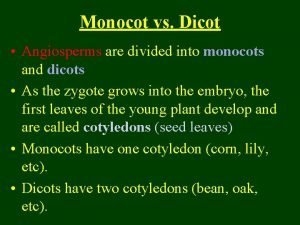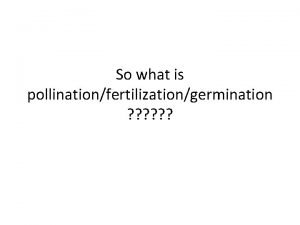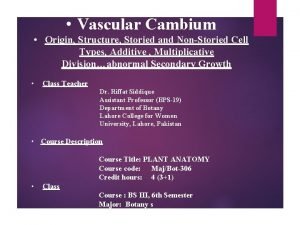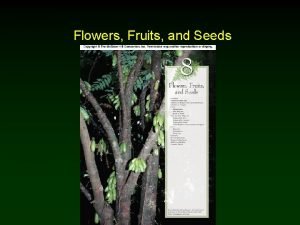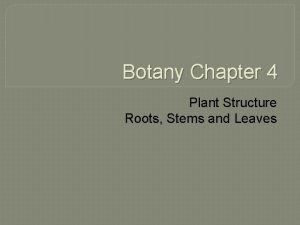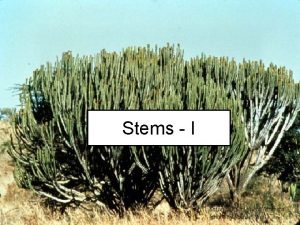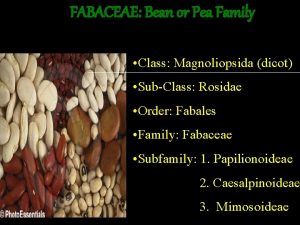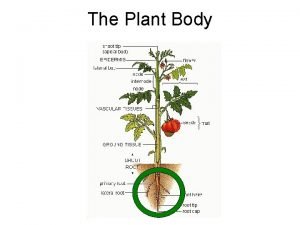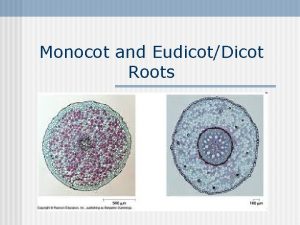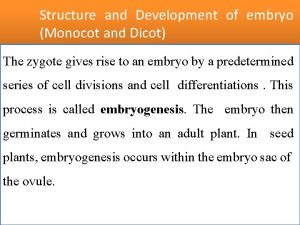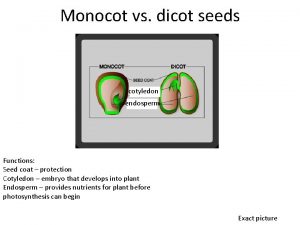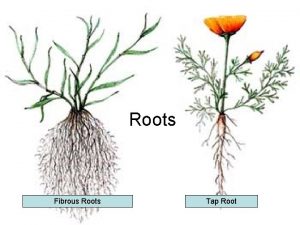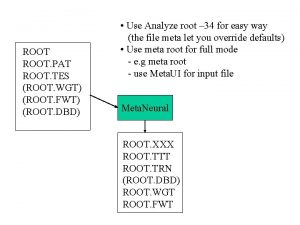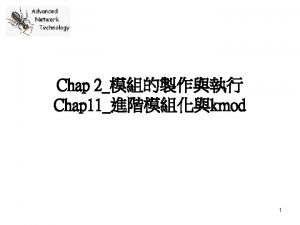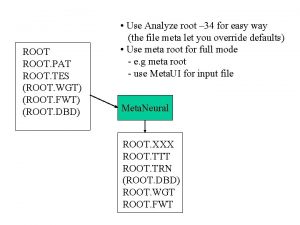Monocot and EudicotDicot Roots Dicot Root Monocot Root















- Slides: 15

Monocot and Eudicot/Dicot Roots Dicot Root Monocot Root

Roots (below ground) n n The first structure to appear when a seed germinates and is called the radicle in the embryo. The function of the root system is to absorb water and nutrients from the soil for the growing plant, as well as providing a stable anchor.

n Water is absorbed by a process called OSMOSIS (Note: Root cells are usually hypertonic to soil, so water will enter the cells passively by osmosis. ) n The walls of root cells are very thin and have a large surface area. The depth of the root depends on the moisture content of the soil. n

General Structure n Each root has a meristemic area near its tip to allow for growth. n At the tip of each root is a cluster of cells forming the root cap; these cells produce a mucus-like substance which lubricates the movement of the root through the soil. Root hairs increase surface area of the epidermis increasing absorption of nutrients and water. n

Some definitions: copy on back of handout Xylem – a series of pipes running through the roots, stems and leaves carrying water through plant n Phloem – carries food and dissolved materials through plant n Vascular Cylinder – central portion of a root that contains the xylem and phloem n

Monocot Roots fibrous roots (many branched roots of equal size) n Examples: grasses, grains, corn n Cross Section - separate strands of xylem and phloem alternate around a pith-like region

Monocot root epidermis Vascular Cylinder cortex phloem xylem pith/parenchyma endodermis (Casparian strip)

Note the xylem and phloem in these differently stained monocot roots.

Eudicot Roots n n tap roots (1 large main root and smaller lateral roots) Examples: carrots, beets, beans, dandelions, most trees Cross Section - xylem is irregular and a solid strand - phloem is arranged in separate strands

Eudicot root epidermis cortex phloem xylem NO pith/parenchyma endodermis Vascular Cylinder

Note the xylem and phloem in these differently stained dicot roots.

More Definitions: Epidermis - provides protection and regulates water movement - epidermal cells can elongate and form root hairs which increase the surface area for water absorption

Cortex - the innermost layer of cortex cells is called the endodermis - the endodermal cells are coated with a waxy layer called the casparian strip (this prevents water from moving in the spaces between the endodermal cells)

REVIEW:

Homework: n n n Read 558 -563 Describe: a) cortex b) endodermis c) Casparian strip d) vascular cylinder e) pith/parenchyma Do P. 563#4
 Alfalfa monocot or dicot
Alfalfa monocot or dicot Difference between dicot and monocot
Difference between dicot and monocot Fusiform and ray initials
Fusiform and ray initials Dicot fruit
Dicot fruit Colocasia is monocot or dicot
Colocasia is monocot or dicot Dicot leaf
Dicot leaf Water lily monocot or dicot
Water lily monocot or dicot Dichotomous venation examples
Dichotomous venation examples Siphonostele diagram
Siphonostele diagram Is coconut a monocot or dicot
Is coconut a monocot or dicot Produces pollen
Produces pollen Fabaceae monocot or dicot
Fabaceae monocot or dicot Adventitious roots
Adventitious roots Lesson 3 existence and uniqueness
Lesson 3 existence and uniqueness Longitudinal section of dicot root
Longitudinal section of dicot root Perfect square definition
Perfect square definition
